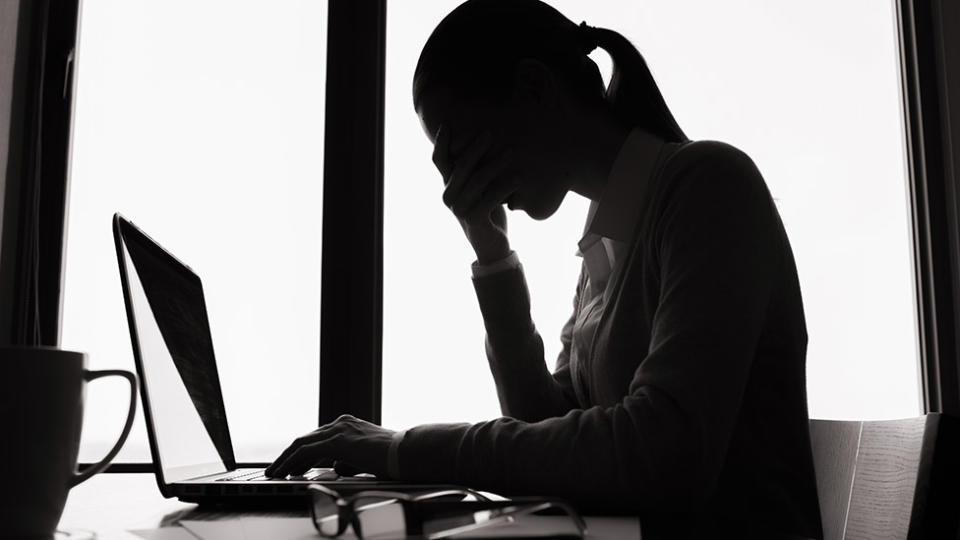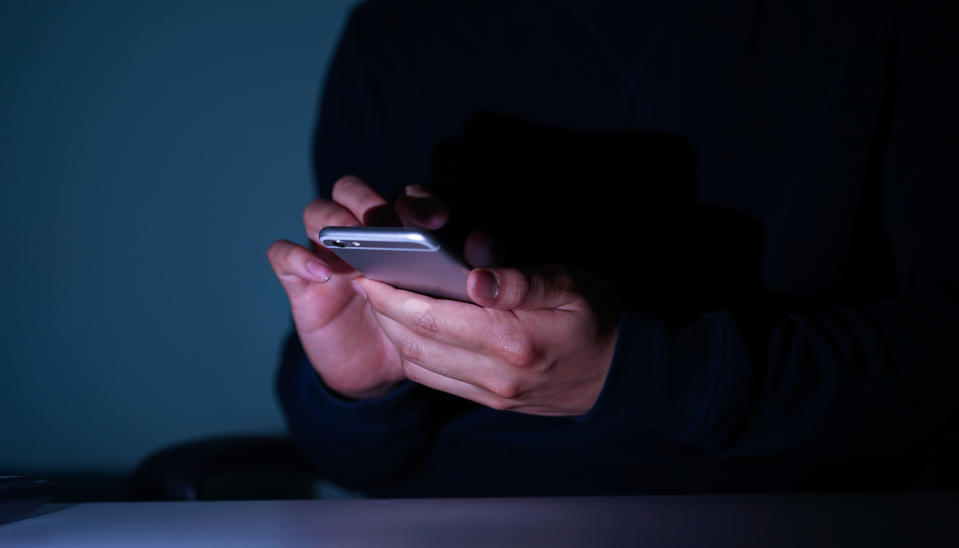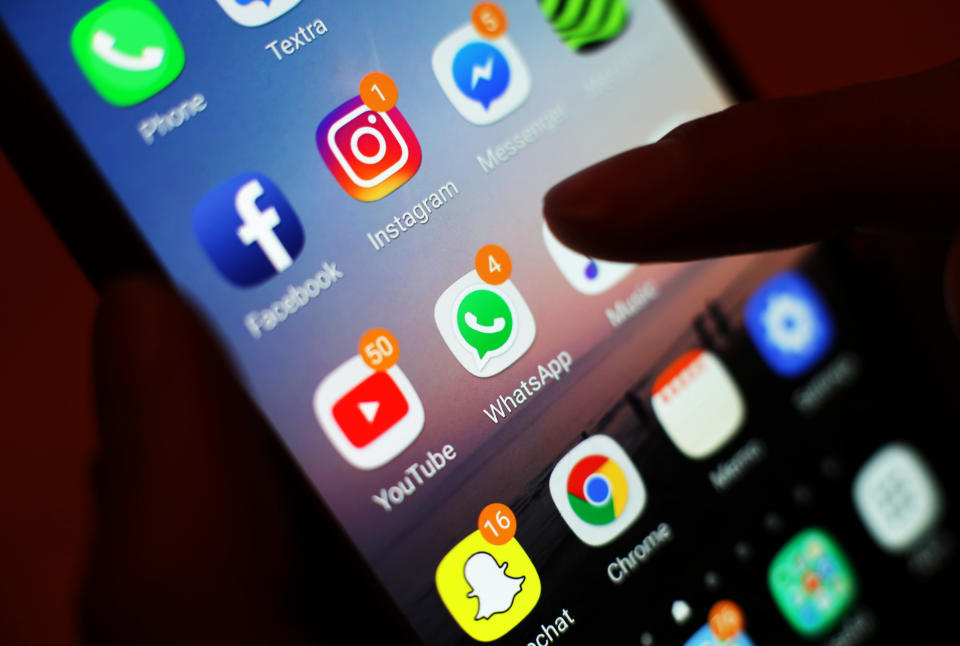'He shamed me': Woman's harrowing ordeal after becoming 'revenge porn' victim
During the coronavirus pandemic while the world was in lockdown, reports of image-based abuse or so-called “revenge porn” skyrocketed.
From March to May this year, the eSafety Commissioner had more than 1000 reports of image-based abuse, a 210 per cent increase week-on-week compared to last year.
Over the Easter long weekend, there was a 600 per cent increase in reports compared to last year.
Image-based abuse is not just when nude or sexually-explicit photos are taken or viewed without a person’s consent, but also when someone is threatened to take or share explicit images.
Zoe [not her real name] spoke to Yahoo News Australia about her harrowing experience on the condition of anonymity. Her ex-partner used the explicit photos she shared with him, and the photos he took of her without consent, against her.

The abuse Zoe was subjected to was manipulative, an elaborate plan to win her back and hurt her for refusing, all while isolating her from her friends and family.
The harassment and abuse lasted months.
“When we broke up, it was like, ‘give into my demands or I’ll do this’, and it was a threat to send them [the photos] to my friends and family,” Zoe told Yahoo News Australia.
“It was a way of controlling me, to shame me.”
The ex-partner shared explicit images of Zoe to her friends and family on her own social accounts after he hacked her online profiles.
The abuse then escalated and Zoe’s ex-partner created social media accounts filled with her intimate photos.
To counter the images being shared on social media accounts, Zoe deleted her online profiles, isolating herself from those she used the platforms to communicate with.
He then made a website, advertising her personal details along with her photos, further exposing her and taking away her safety.

How technology has changed the way we communicate
Due to the global pandemic and physical distancing measures, Anastasia Powell, an associate professor of Criminology and Justice Studies at RMIT, said it was to be expected people used technology to connect with each other, and also to be intimate.
Assoc Prof Powell along with Asher Flynn, also an Associate Professor in Criminology but at Monash University, have been researching image-based abuse for years.
They explained the increase in the reports is likely due to more people connecting online.
“People are going to be engaging in video calls, sharing images, expressing their intimacy in those online and tech-based ways,” Assoc Prof Powell told Yahoo News Australia.
“Unfortunately, that does mean those images then are more available for perpetrators who want to choose to use that to abuse and harass someone.”
The reality is the internet and smartphones have changed the way we communicate, the coronavirus pandemic merely re-enforced that.
Assoc Prof Powell says in the context of COVID-19, it is important to recognise there is consensual adult behaviour and people will be relying on technology to communicate intimately, and technology should not be blamed.
“What is unacceptable here is someone who then chooses to use those images to abuse, harass or to somehow otherwise gain,” she said.
“If you trust someone, how is being intimate through technology different to any other act of intimacy?
“You think, well I trust this person with my bank account details, I trust this person with my phone, I trust this person with my car - so if you trust them with so many other things, you could give them a key to your house,” Zoe said.
“In a sexual relationship, they see you naked, so why is it different to send them a photo? But the power that they take from having those photos is amplified by what they can do with them after.”

Motives behind image-based abuse
Image-based abuse is often referred to as “revenge porn” – and there are a few reasons as to why that term isn’t appropriate.
“The first is one of the key factors is it equates this type of behaviour as the victim is somehow being complicit in some way or being responsible for what’s happened to them,” Assoc Prof Flynn explained to Yahoo News Australia.
“So by calling it ‘revenge porn’ it implies there’s something for the perpetrator to be getting revenge for doing, as opposed to it being an abusive act that they’re engaging in themselves.
“It also wrongly equates this type of behaviour solely with revenge and ex-partners perpetrating revenge against each other, when we found there can be a significant range of motivations.”
The fatal danger which is spiking due to coronavirus pandemic
How to keep your mental health in check if self-isolating or working from home
Assoc Profs Powell and Flynn also acknowledged there could be a financial aspect to the increase in reports during the lockdown, due to people losing their jobs.
Although extorting victims for cash is nothing new.
“The perpetrator uses fear and intimidation to threaten the victim into complying with their demands,” Victims of Crime Assistance League (VOCAL) NSW CEO Kerrie Thompson told Yahoo News Australia.
“The threat might be to distribute photos online if the victim was to end the intimate relationship, or another threat might be financial blackmail.
“It is an awful crime that breaches trust and privacy rights, and creates a lot of psychological distress for the victim.”

Image-based abuse is a criminal offence
Zoe reported the abuse to the police, one officer theorised if she hadn’t taken the photos, her ex-abusive partner wouldn’t be able to use them against her.
She said she can’t change what she did in the past, let alone do anything about the images she did not know existed until the abuse started.
Although laws differ from each state and territory, image-based abuse is a criminal offence under federal law and perpetrators can face up to three years in prison.
There are ways to put a stop to the abuse: you can report it to the eSafety Commissioner and to the police.
The shame victims feel can often be a barrier that prevents victims coming forward. For Zoe, she knew once she went to the police, she would have to share the images with them.
But she did come across a few police officers, who had come across image-based abuse a fair bit and they were supportive.
However, for many victims it is still very intimidating reporting the abuse to the police.
There is also a degree of victim blaming when people come forward when they are a victim of such crimes.
“No one wants to talk about it and no one wants to admit they’re doing it, but a lot of people at some point in their life come across a situation ... whether it’s because of distance or something,” Zoe explained.

She said she often felt embarrassed or ashamed about even having the photos.
Not only are victims blamed, often the harm caused by image-based abuse is minimised, by authorities and sometimes by the victim’s loved ones.
Only a few people in Zoe’s life know the full details of the abuse and she has heavily censored what her family knows.
Zoe believes there needs to be more education around image-based abuse and the potential dangers of sending photos to other people.
“You can’t control others, so you have just got to keep yourself safe,” she said.
The image-based abuse was just one part of the domestic violence Zoe was subjected to but she is doing a lot better now.
“When I was going through what happened, I felt like I was a victim and it was a long way through it, but when I reflect on how I’ve come after, I feel like a survivor,” she said.
She said when you’re victimised, it can feel like it won’t come to an end, but with time you can heal.
Victim blaming needs to end
Over the years, image-based abuse rates have increased. In 2016, one in five Australians had been a victim. The latest research shows one in three Australians have been a victim of image-based abuse.
One in six of the 2000 participants in the 2019 study, admitted to being perpetrators.
As technology evolves, it becomes more integrated in our relationships, especially among the younger generations.
VOCAL NSW conducted surveys with kids from Years 7 to 10 in high school, and found only 4.4 per cent of students were concerned with sexting, while 39 per cent said it didn’t worry them at all.
Of those surveyed, 67 per cent said flirting was a motivation to send a nude photo, while 42 per cent said not getting dumped is a motive behind sending a nude photo.
In the light of our online behaviour evolving and adapting to the times through the pandemic, hopefully there is a shift in attitude.
“I think if we’ve learnt something through this time of COVID-19, it is that these technological ways of communicating are not in themselves wrong,” Assoc Prof Powell said.
“They’re not themselves risky, what is wrong is when someone uses that technology to engage in harassment or abuse.”

Both Assoc Profs Powell and Flynn agree it is important to believe victims of image-based abuse, but it is also integral if this kind of abusive behaviour is observed, it must be called out.
“Instead of focusing on the things like the ‘how’ and ‘why’, to approach it more like – what can we do to help?” Assoc Prof Flynn said.
“As soon as you start asking questions like, ‘How did they get the image?’ or ‘Why have they got this image?’, I think we’ve leant towards going down the victim-blaming path.”
In terms of how to support a victim of image-based abuse, Zoe suggests offering to go with a victim when reporting it to the police and stand up for them if an officer tries to victim blame them or disregard the harm caused to them.
Zoe’s abuser was jailed, the image-based abuse was just one of the vile acts he committed against her.
“When I was going through what happened, I felt like I was a victim and it was a long way through it,” she said.
“But when i reflect on how I’ve come out of it, I feel like a survivor.”
If you or someone you know is impacted by sexual assault, domestic or family violence, call 1800RESPECT on 1800 737 732 or visit 1800RESPECT.org.au
Do you have a story tip? Email: newsroomau@yahoonews.com.
You can also follow us on Facebook, Instagram and Twitter and download the Yahoo News app from the App Store or Google Play.





